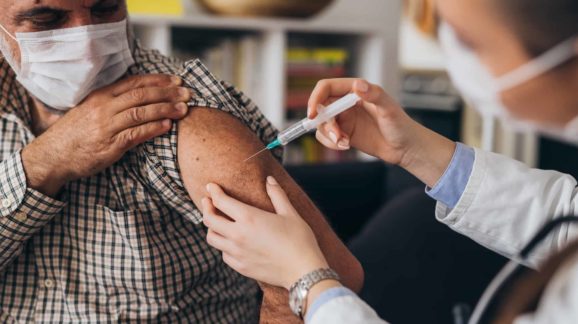Some Questions About the Legality of President Biden’s OSHA Vaccine Mandate

Photo Credit: Getty
On Thursday, September 9, 2021, President Biden announced he is directing the Occupational Safety and Health Administration (OSHA) to issue an Emergency Temporary Standard (ETS) mandating that all companies with 100 or more employees ensure their workers are either vaccinated against COVID-19 or tested weekly. This announcement raises several major issues.
- The fundamental right to bodily integrity: A person’s bodily integrity is protected by both common law and the U.S. Constitution. People have the right to refuse medical care, including life-saving treatments. Courts, most notably in the 1905 U.S. Supreme Court decision of Jacobson v, Massachusetts, have held that in compelling circumstances such as communicable disease outbreaks, states can exercise their police powers to protect public health and safety by mandating vaccinations. But under our Constitution the federal government is limited to enumerated powers; the authority to deal with public health issues, including mandating vaccinations, is generally a power of the states, not the federal government.
- The limited power of the federal government: The President and his administration have repeatedly stated that the federal government would not and could not impose vaccine mandates. On July 23 White House Press Secretary Jen Psaki said that mandates are “not the role of the federal government; that is the role that institutions, private-sector entities, and others may take.” Now the President has reversed his position. This is similar to his handling of the Center for Disease Control and Prevention’s (CDC) nationwide eviction ban—the President first acknowledged he lacked legal authority to extend the ban, and then reversed course and renewed it days later. The Supreme Court terminated the ban because it exceeded the CDC’s statutory authority.
- The stringent requirements for an Emergency Temporary Standard: Under section 6(c) of the Occupational Safety and Health Act, OSHA can issue an ETS without the normal notice-and-comment rulemaking if it finds that “employees are exposed to grave danger from exposure to substances or agents determined to be toxic or physically harmful or from new hazards” and that the ETS “is necessary to protect employees from such danger.” The “grave danger” required for an ETS has not been clearly defined, but courts have held that it is higher than the “significant risk” needed for a permanent OSHA standard under normal rulemaking.
- COVID-19 is a significant public health threat, but is it a “grave danger” to workers? Estimates of COVID’s fatality rates range from 0.4-0.7 percent. This is little more than twice the rate for influenza—significant, but hardly grave. Moreover, the risk is lower now than in the past—roughly 80 percent of the nation has vaccine or natural immunity, the Delta surge appears to have peaked and is declining, and effective treatments are available. Furthermore, the natural immunity of people who have already recovered from COVID-19 appears to be better than vaccine immunity. Requiring them to be vaccinated would do no good medically but would cause additional strife.
- The questionable “necessity” of an ETS: It is doubtful that OSHA can demonstrate an ETS mandating vaccination is “necessary” to protect employees. Many less invasive alternatives are available, such as the face masks that the Biden administration has consistently maintained are highly effective in protecting against transmissions. In fact, in June OSHA issued a COVID ETS to protect healthcare workers via such masks, as well as physical distancing, ventilation systems, and other non-invasive measures. If such effective measures are already available, why is a vaccine mandate needed?